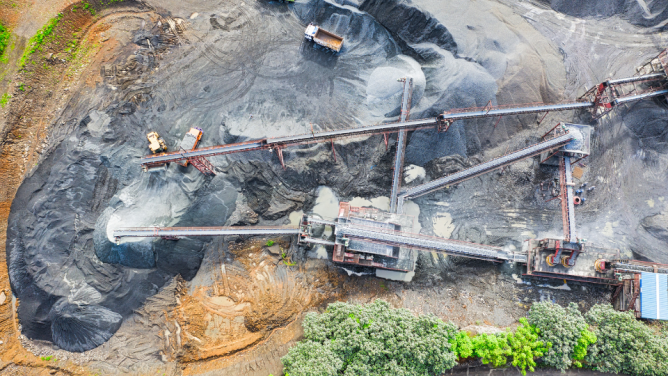Urban soils have become crucial in sustainable urban development. Changes in regulations and the ever pressing issues of limiting the effects of global warming and environmental protection means that we are taking a fresh look at them. They are increasingly important as valuable resources for the future of our cities: in filtration, rainwater regulation, support for plant and animal biodiversity, and amenities.
The awareness of their importance is growing, with projects which preserve existing soils and integrate soil management in development and construction projects. The recycling of excavated soil from major development projects, such as the Grand Paris Express, is a testing ground for more sustainable practices and best use of a resource often ignored until recently. Soil management and the rewilding of the land modified by development projects are becoming more established, and involve the joint efforts of ecological engineering specialists and developers, as seen in the know-how developed by Eco Vivo.
Below, Leonard offers a selection of useful sources to further explore the role of soils in the environmental transition.
#Fundamentals
A working group for the Committee for the Green Economy (CEV) has issued a statement on cost-effective procedures to limit soil artificialisation. Based on a two-fold observation – the increase in soil artificialisation in France, and the low use of urban spaces- the working group has recommended the need for “an overall vision for urban, natural, agricultural and forest areas (ENAF), by improving current ENAF management practices, and making better use of artificialised spaces.”
In the following article, Métropolitiques discusses the many roles played by urban soils, and bring together different viewpoints of researchers, urban planners, architects, landscape gardeners and soil scientists. The authors address three essential soil issues: food supply, maintaining biodiversity and recycling urban waste.
In order to plan for the future of urban soils and to make better use of them, we need better knowledge of their environment. According to the authors, “we need to learn about ‘soil-geochemical background’. The natural concentration of elements or ever-present substances in the soil, excluding human input, is known as ‘natural geochemical soil background’ (NGSB). Together, NGSB and concentrates of human activities are known as “anthropogenic geochemical soil background” (AGSB).”
#Studies
The following study, using Life Cycle Assessment methods to measure the carbon footprint of different types of urban development, has concluded that high rise and urban sprawl increase urban carbon footprint, but that dense, low rise housing lowers it.
The Unep-Hortis Green Cities Observatory publishes studies in France on spontaneous vegetation, soil artificialisation and urban biodiversity. A survey of 18 cities reveals that French local authorities have three main goals in the fight against soil artificialisation : promote urban biodiversity, improve living conditions for city-dwellers, and fight heat islands.
The magazine Archimède revisits past urban soils, with a collective study called “Urban geoarchaeologies : for a better understanding of geosystem artificialisation”. From the Iron Age to the modern age, the researchers look into pre-urban topography, the social management of material flows, pollution, space occupation and the change in spatial stratifications.
All soils, including urban and peri-urban soils, must be healthy to fix CO2 effectively, as seen in the following article : “What links contaminated soils, organic soil carbon and climate disregulation?”
The “Critical Zone” has a dedicated observatory called OZCAR. This national research infrastructure brings together 21 observatories dedicated to research applied to the fields “between rocks and the sky”.
Tree health crucially depends on soil conditions, as stated in this Harvard University Arboretum paper.
#Viewpoints
Paola Viganò (Urbanisme 2013 First Prize Winner), Martina Barcelloni Corte and Antoine Vialle present an original theoretical framework with “soil project” and “the soil of the city-territory”.
Revue d’anthropologie des connaissances
Geographer Flaminia Paddeu has been investigating urban soils on the fringes of big cities such as Paris, New York and Detroit. In her book, she argues that urban agriculture allows for production, resistance and a different way of living.
Sous les pavés, la terre – Agricultures urbaines et résistances dans les métropoles
The geographer Guy Burgel is concerned about the inappropriate use of the term “urban density”. Density encompasses “unquantifiable and fanciful theories regarding urban exodus and the decline of big cities, the return to small and medium-sized towns, the victory of family houses over city flats, supported by the supposed spread of coronavirus in high density dwellings.”
#Further Exploring
Médiacités’ aerial view of the urban sprawl in the Lyon metropolis.
The New York platform “Urban Soils Institute” brings together researchers and artists to discuss urban soil issues and offers soil quality testing services, information workshops for members of the public, and professional training backed up by a research unit.
#You’ve read it here first!
Underground or in the Air, where to Build? (in French)
Latest UK biodiversity targets for all new buildings
On set with Sylvain Grisot, author of “Manifesto for a Circular Urbanism”

